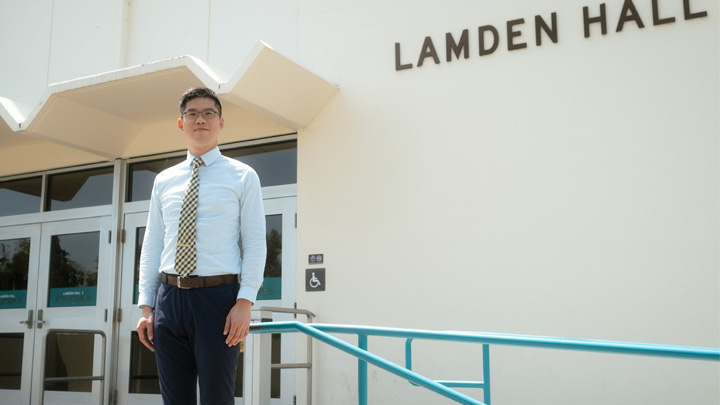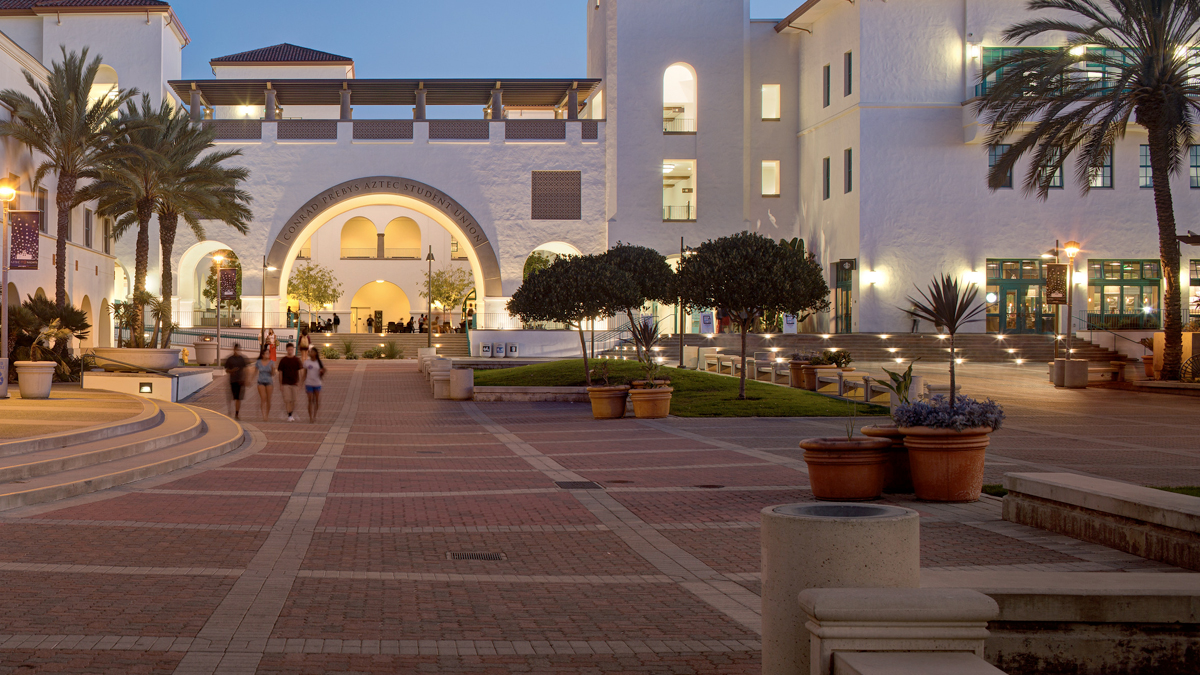A dot connector and harmonizer: CFD welcomes new chair Hsien-Chang Lin

Hsien-Chang Lin made himself an expert in many disciplines on his path to becoming the newest chair of San Diego State University’s Department of Child and Family Development (CFD). Though his biggest strength, he says, may just be the ability to connect dots to bridge them all.
A few dots on Lin’s unconventional educational journey:
- He was a double major in economics and sociology at National Taiwan University, where he also earned a master’s in economics.
- Wanting to come to the U.S. for a Ph.D. program, he chose to study public health at the University Michigan.
- He soon became a dual Ph.D. student in health policy and pharmaceutical health services research.
- He completed a post-doc in pharmacoepidemiology.
"I've become used to moving to different fields,” Lin explains. “I think that's why I'm very good at connecting people in different fields and facilitating trans-disciplinary research. When it comes to research, I see my role as chair to be connecting our CFD faculty members to people in different fields — fields like public health, health behavior and health care.
“There are always ways you can creatively connect the dots."
For the past decade-plus, Lin has served on faculty at the Indiana University School of Public Health, where he twice earned the IU Trustees Teaching Award as well as a mentorship award from the American Academy of Health Behavior (AAHB), for which he is also a fellow and past president. His research at IU has centered on substance use, health services prescribing and utilization and associated health outcomes.
The COE news team recently sat down with Lin to talk about his diverse interests and his new role at SDSU.
Your scholarly background has been remarkably varied. How does it align with CFD?
"I kind of wondered that initially. But the more I looked at the mission of the CFD department and learned about the faculty members' research profiles, the more alignment I discovered. For example, even though I do a lot of substance use, health behavior type of research, one of the focus populations of mine is adolescents — especially around vaping, which has really been a focus of my research program.
“I've also had some family and parent components in my study, for instance how parents' use of substances influence exposure or how family conflict influences or mediates children's deviant behaviors. Another thing I'm interested in is how adverse childhood experiences influence later-life delinquent behaviors, including substance use. I'm interested in the psychological pathways linking the two. I'm also shifting that paradigm by looking at the impact of childhood positive experiences.
"I also know many CFD faculty want to have connections with public health — especially around mental health and health care access. That is also something I can definitely help with."
What impresses you most about the work CFD faculty are doing?
"I'm very interested in how they engage with the community. That was something that really attracted me here. I've done a lot of research but one thing that I really want to extend is to have more community based, community engagement kind of research. In public health, we design interventions — but the interventions have to be implemented within communities. And they have to be tailored to and tested in different populations with distinct risk and protective factors. Community engagement is something that I really admire about San Diego State."
What has led you to want to tackle so many seemingly disparate disciplines?
"I thought about that. I think being very greedy is probably the reason (laughs). I remember when I was a young student, there were some required courses and within all of them there were different sections with different instructors. Many of my friends selected the easier instructors. I am the person who always picked the most intense, difficult instructor. I always like to be challenged because I think that's a good way to learn more. And that led me into different fields."
Has it ever been a struggle?
"My first year in the United States was very hard for me. I didn't know how to speak English well. I didn’t know how they teach here. I had never lived abroad. I had never studied public health. There were times in the first few years when I kind of wondered if I had made a mistake, regretting why I had put myself into these difficulties.
“However after I became a professor and was looking back, all those hardships turned out to be blessings. I could do all of these interesting research projects. I was mentally stronger and more resilient. That was all because of those hardships. Now I think it was one of the best decisions I ever made in my life. So now — as I'm switching to a new discipline and a new institution — I’m not afraid. I’m actually very excited!"
What goals do you have as chair of CFD beyond research?
“I have several goals I hope to accomplish during my tenure as CFD chair. I’d talk about two of them here. First, I see that San Diego State is moving from an R2 to an R1 institution. I think this is a very good move, however this might sometimes make teaching-focused faculty members feel like they won't be valued as much as before. And teaching is a very important mission of the department. We want more people to work in the community helping children, parents and families. I want to make sure that our teaching-focused faculty members still feel valued during this transition.
“Second, my Indiana colleagues told me that I would make a good department chair because I’m ‘a good harmonizer.’ I thought about that and I think that's a really good term for me. My approach is to build mutual trust between me and the faculty. I think that will serve as a really solid foundation."
After so long in the midwest, any thought on moving to California?
"San Diego is really my dream city. I've visited from time to time and every time I'm here I feel really happy. I've been in the midwest of the U.S. for 19 years and I still love the midwest a lot — I love the four seasons. The snow … well … every once in a while when it’s pretty. (laughs) But I think I'm ready for life in California."
Interview lightly edited for length and clarity.

